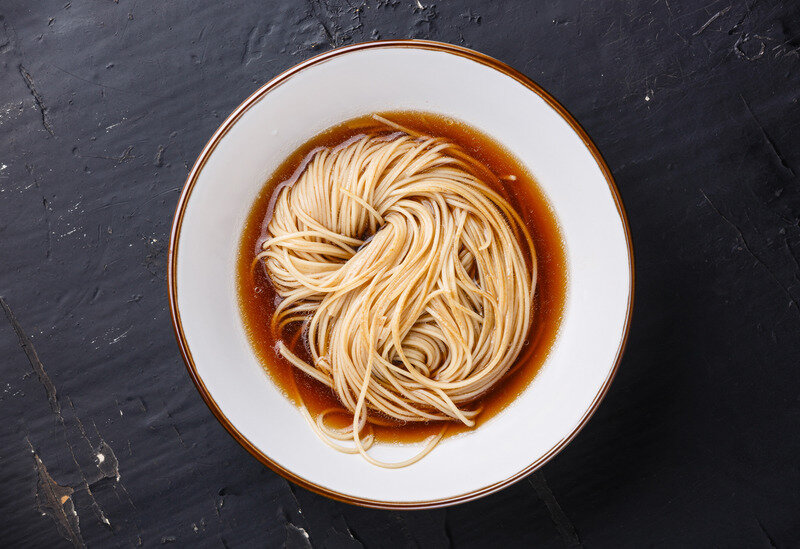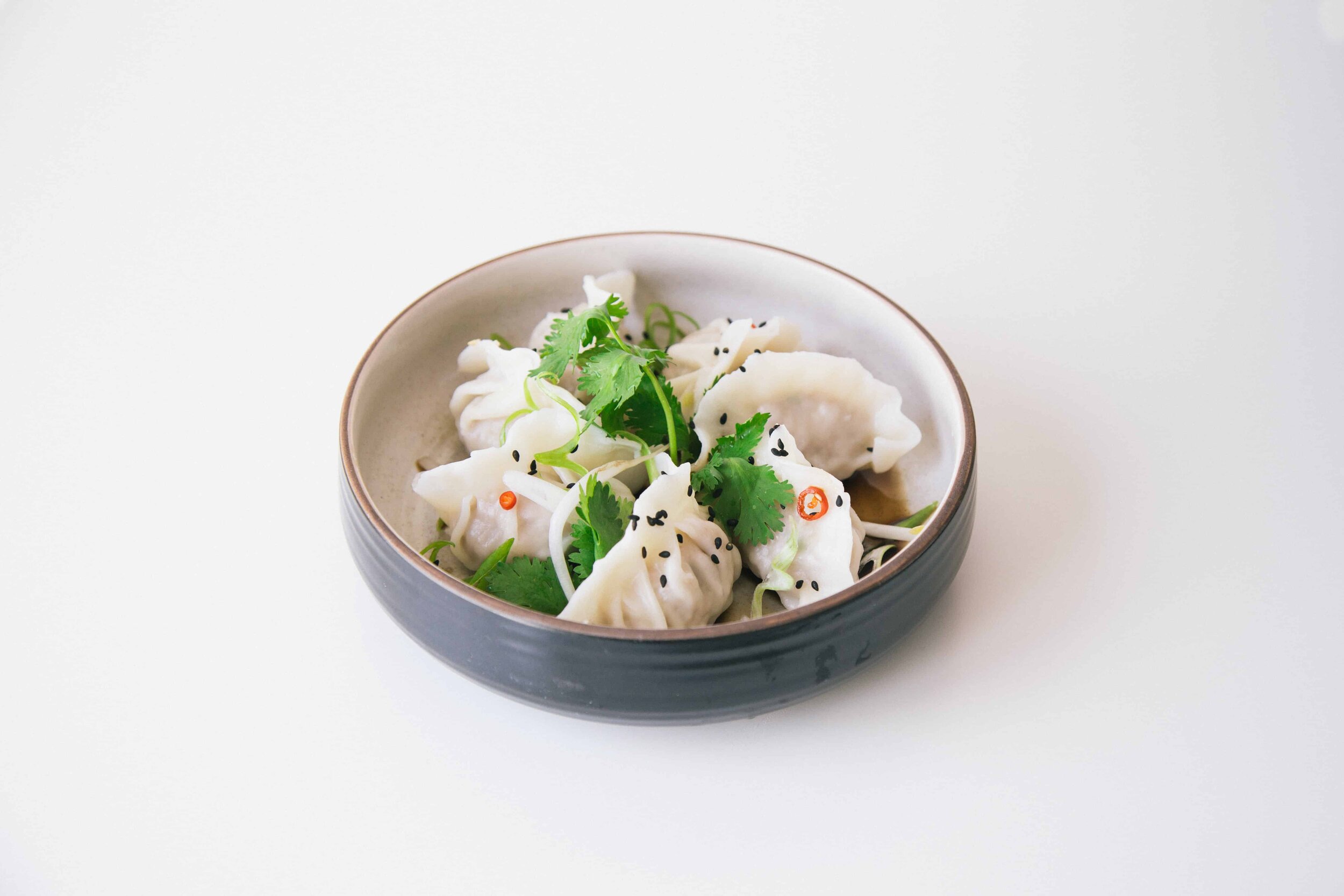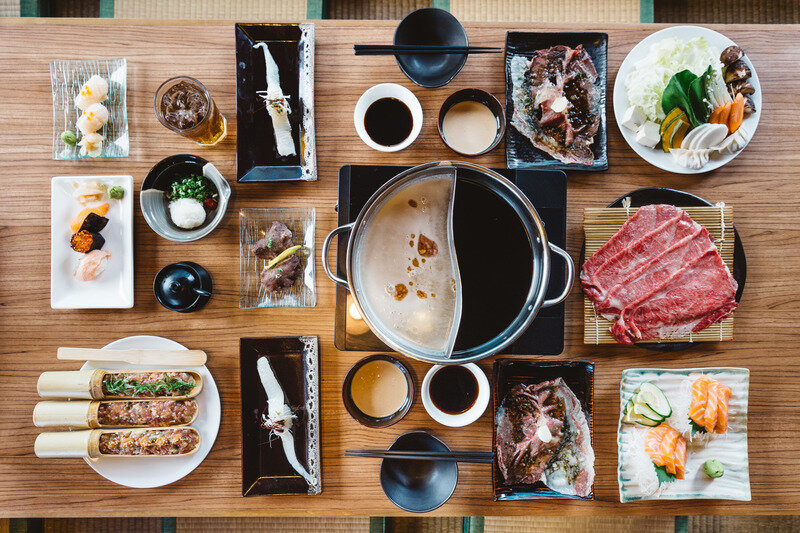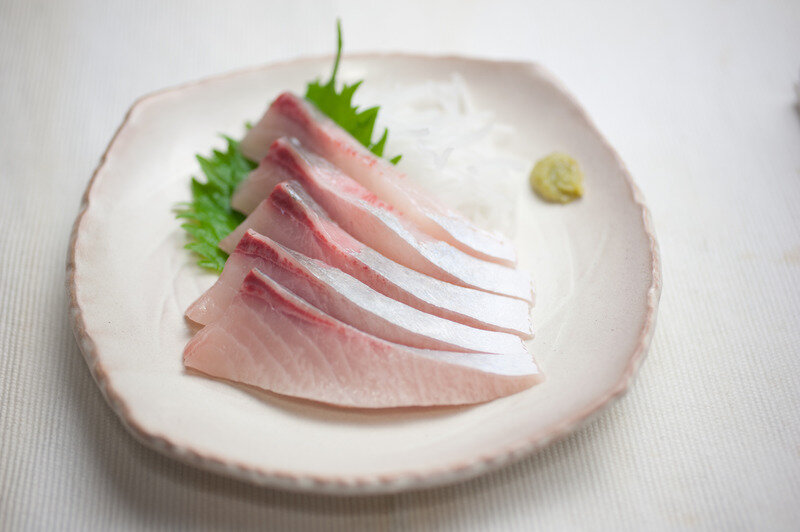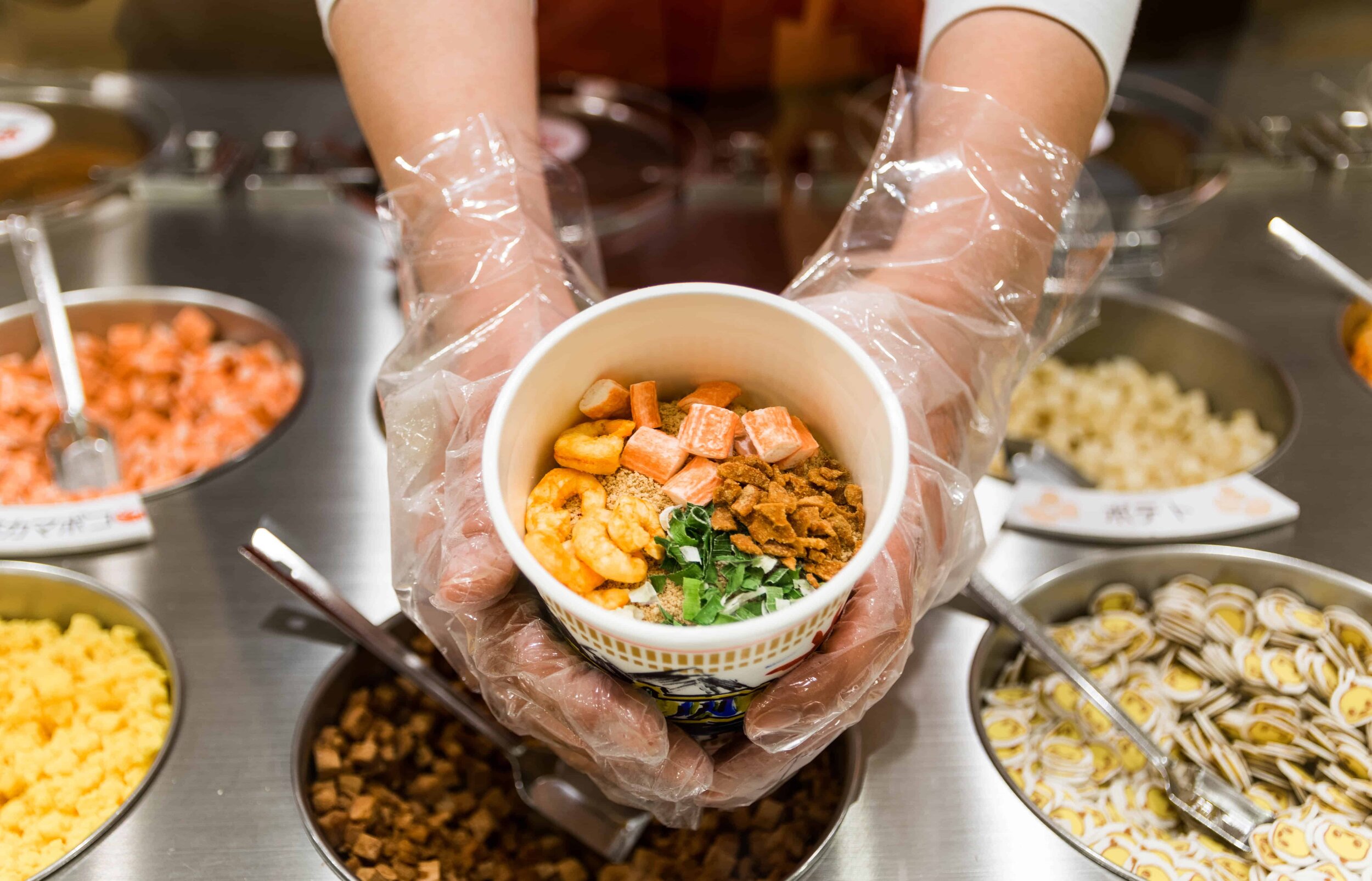Is Japanese Ramen Healthy? (5 Tips For Weight Loss)
Japanese Ramen is definitely one of the most popular foods around the world.
There’s something so special about the rich flavors and chewy textures that you get from this dish which makes it a delicacy worldwide.
Although Japanese Ramen is delicious, is it healthy?
Japanese Ramen consists of a lot of fat and carbs as expected for most noodle dishes. This means that it offers a high potential for weight gain as it is very dense in calories. However, with any food, you can manage to have a bowl or two as long as you are aware of how many calories you consume on a daily basis.
In order to eat Ramen and still stay within a healthy range, we’ve come up with a list of five tips to help you eat your favorite noodles and still stay in shape.
Here are the five steps to stay healthy while eating Japanese Ramen.
Understand What Goes Inside Ramen
Understand The Calories Of Each Type Of Ramen
Understand How Many Calories You Need To Eat In a Day
Make Sure To Consistently Workout & Build Muscle
Keep Active & Utilize The Calories From Ramen
Now that we know our five steps. Let’s take a deeper look into what we can do to eat Ramen and still stay in shape.
Tip 1: Understand What Goes Inside Ramen
Ramen is actually a very complex dish and requires a lot of preparation and work to create.
Let’s start with the soup base and broth.
What makes Japanese Ramen so special is the flavors and richness you get from the broth.
Japanese chefs go above and beyond as they usually have a double broth coming from both pork and chicken.
They also love to put aromatics into the broth as it simmers for hours on end.
These aromatics include ginger, garlic, scallions, onions, and carrots.
What you end up with is a deeply flavorful broth that coats the noodles with a tremendous amount of flavor.
After the meats have embedded the water with their flavors, the broth is then rested as it waits for the kombu broth to be mixed into it.
After the first broth is created, Japanese chefs then like to make a kombu based broth that is simply made out of bonito flakes and kombu.
This creates another layer of flavor and is what steps up Ramen from other noodles you can find out there.
After simmering this second broth, they then add it together and create a kombu, pork, and chicken broth that acts as the base for the many different types of ramen available.
After this complex broth is made, many seasonings such as shoyu or mirin are added to the base to make a certain type of ramen.
There are really four different types of ramen which we will go over in the next section.
Let’s talk about the noodles and what makes them so special.
Unlike other noodles that are made of egg or just water, Ramen noodles are made with Sodium Bicarbonate which is a term for baked baking soda.
Sodium Bicarbonate allows noodles to take liquids while maintaining its chewy and bouncy texture.
This is why Ramen noodles aren’t made with the traditional egg flour solution as they will windle and become soggy.
Overall, Ramen is such an amazing and complex dish that offers flavors that you can’t get from anywhere else in the world.
It’s one of the world’s most popular dishes for a reason and there’s no denying how important it is in the world of great cuisines.
Let’s take a look at the different types of Ramen you can find and how many calories go into each of these bowls.
Tip 2: Understand The Calories Of Each Type Of Ramen
There are many different types of Ramen you can find out there but in this article we will just be focusing on the four most popular types.
Let’s go over the calories for each of these noodles and see which ones are the best for when we are dieting.
4. Tonkotsu Ramen
Tonkotsu Ramen is definitely my favorite as it utilizes pork trotters in their broth which makes for a super flavorful and creamy soup base.
This is definitely a fattier dish as it simmers fatty pieces of pork for hours which adds a lot of rendered fat to the broth.
Let’s take a look at the calories and see what goes inside a typical Tonkotsu Ramen dish.
For every 25 grams of fat, there are 70 grams of carbs and 21 grams of protein.
You can see this dish is definitely higher on the carbs and fats which is typical for a noodle dish.
It’s definitely not something you want to eat if you’re trying to diet as a single bowl will take away most of your carbs for the day.
Our tip here is to make sure that you are not eating carb heavy meals before or after having this ramen.
Tonkotsu Ramen lacks protein so make sure your other meals come with high protein with low fats and carbs.
It’s all about balance when staying healthy so make sure all three macronutrients are in a good standing.
3. Shoyu Ramen
Shoyu Ramen is usually made with chicken neck and bones rather than pork trotter or necks.
This means that there will be a lot of less fat in the broth which makes for a lighter and clearer soup base.
Shoyu Ramen is definitely a lighter kind of Ramen which is nice when you’re not looking for something too rich.
Just because it’s lighter, however, does not mean that it does not taste as good.
There’s a ton of flavors that come from the seasonings and aromatics in this dish so you can expect a flavorful meal with a lot less fat.
Let’s take a look at the nutrition facts and see what goes inside a typical Shoyu Ramen.
For every 6 grams of fat, there are 61 grams of carbs and 22 grams of protein.
This is a lot better than the Tonkotsu Ramen that we looked at above.
6 grams of fat per cup of Ramen is a much more reasonable amount of fat which can save on a ton of calories.
Although the fats are lower, the carbs are still relatively high so make sure to balance out the amount of carbs you eat in a day.
You want to make sure that no more than 45% of your calories come from carbs.
Unless you live an extremely active lifestyle, you want to make sure you keep this number where it is.
2. Miso Ramen
Miso Ramen is definitely one of my favorite types of Ramen as there is so much flavor you get from the broth and miso paste.
Miso Ramen is typically made with a pork broth so you can expect the fats to be a little higher per serving.
What really makes this dish stand out is the variety of aromatics that flavor the soup base.
The broth of Miso Ramen usually includes garlic, ginger, sake, shallots, mirin, and white pepper.
After simmering for hours, you can expect these flavors to really kick in as it surrounds the pork for hours on end.
If you’ve ever had Miso Ramen, you know how delicious this dish can be.
Let’s take a look at the calories and see what goes inside a typical Miso Ramen.
For every 13 grams of fat, there are 40 grams of carbs and 10 grams of protein.
Once again, this is a pretty high carb and fat dish so you’ll need to supplement with a lot of protein throughout your day.
Miso Ramen typically comes with less noodles as the broth is so thick which is probably why the calories coming from carbs are lower for all the nutrition labels I could find.
However, the dish lacks protein so make sure you’re eating lean meats throughout the day to get that balance.
1. Shio Ramen
Shio Ramen is the traditional form of Ramen as it is a salt based broth that focuses on its aromatics rather than the fats you get from different types of meat.
The broth used is typically a chicken broth that is very clear as there is not much fat compared to other soup bases.
This dish relies heavily on its aromatics such as kombu and shiitake mushrooms. It’s light and simple but packs a punch when it comes to flavor.
If you’re someone that likes less fatty soups or just want something light for dinner, Shio Ramen is definitely the bowl for you.
Let’s take a look at the nutrition facts and see what goes inside a typical Shio Ramen dish.
For every 12 grams of fat, there are 37 grams of carbs and 16 grams of protein. Not bad at all considering how delicious this bowl of Ramen is.
There was Char Shiu in this recipe I found so the fats are a little higher than what you would typically find.
You can expect to actually have around 5 to 6 grams of fat in this dish rather than 12 grams as there really isn’t much fat at all.
Our tip is to eat Shio Ramen if you’re looking to stay healthy and fit.
There are so many other types of Ramen out there but these are definitely the ones you can find in traditional Japanese Ramen joints.
You can expect these noodles to have a ton of carbs and fats so just make sure that you’re mindful of the macronutrients that you eat in a day.
Now that we know a little about the types of Ramen available, let’s take a deeper look into how many calories we should be consuming in a day.
Tip 3: Understand How Many Calories You Need To Eat In a Day
Understanding how many calories you need to eat in a day means understanding how you look and feel throughout your life.
Calories determine how much energy we consume in a day which means if you have a surplus of energy, you will gain weight unknowingly.
The point of this entire blog is to build awareness of calories in our favorite dishes so we can eat them responsibly and without gaining weight.
Looking up the nutrition labels for certain foods helps us understand whether or not we can fit these foods into our diet.
We simply need to find our total daily allotted calories and fit in these foods without going over those calories.
So, the question remains: how do I know how many calories I need to eat in a day?
Finding your calories is only really possible through trial and error while taking a closer look at your daily activity level.
The only factor we can really control is how active we are so this has to be at least higher than sedentary if you want a good calories range.
There are two methods you can use when trying to find your calories.
The first is to use an online TDEE (Total Daily Energy Expenditure) calculator and input answers to the questions asked.
The second method is to simply multiply your bodyweight by 12 and, through trial and error, tweak the number a bit so it fits into your lifestyle.
There is some calculation involved so let’s try out an example so I can explain this better.
If you want a more detailed description on how you can find your calories and macronutrient ranges, then make sure to check out this article where we go over everything in detail.
https://www.aspirefitnesswalnut.com/how-to-actually-get-a-six-pack-after-30
But, for now, let’s take a look at an example. Let’s take a 130 pound female that wants to lose weight.
The calculation results in 1,560 kcals per day to lose weight.
Depending on many factors this number can be perfect, too little, or too much which means some trial and error is necessary.
If that person does not lose weight with the 1,560 kcals, then she should drop the calories by 100 every week.
Slight adjustments are the key to a successful weight loss program as a slow loss of fat ensures that we do not hit a plateau and starve ourselves.
Let’s say that she finds that 1,460 kcals is the perfect amount of calories she needs to eat in order to successfully lose 1-2 pounds of fat.
After 5-6 weeks she finds that she is no longer losing weight so she must, once again, drop her calories by 100 kcals.
There will come a time, however, when she is too hungry to keep it up.
This is a good transition to the next topic which is why we need to build muscle. Let’s get into it.
The Asian Weight Loss Cookbook
The 15 Fat Burning Meals Cookbook features our favorite recipes that you can use to get closer to your fitness goals.
Whether your goal is to lose 20 pounds or to stay healthier overall, this cookbook will guide you through it quickly and effectively.
Become your own personal trainer with the guidance of this book and make this the year you achieve your insurmountable fitness goals.
Tip 4: Make Sure To Consistently Workout & Build Muscle
The weight loss looks pretty simple from the example above but there is a factor that we need to talk about that makes it hard: hunger.
This where muscle comes in.
Eating at a deficit of calories means that there will be some hunger involved, especially if you’re looking to get abs or a very flat stomach.
Muscle allows us to burn calories at rest which translates to eating more while losing weight.
You can control your RMR (Resting Metabolic Rate) by adding more muscle to your physique. It’s a slight number but it’ll go a long way if you keep it up for a long time.
This is why working out is so crucial and is something that we must be consistently doing for a majority of our lives.
Whether that’s at the gym or in the safety of your own house, working out is something that will help us reach our fitness goals.
If going to the gym isn’t for you and you want to build a gym at home, then check out our list of recommended gear that will get you to your goals.
Here is a link to some pieces of Home Workout Equipment that you need to start training.
https://www.aspirefitnesswalnut.com/home-workout-equipment
If you’re someone who has no idea where to start, then here is a pretty basic workout plan that will get you going into your fitness journey.
WOMEN
Monday (Full Upper):
Seated Shoulder Press: 4x20
Lateral Raises: 4x15
Lat Pulldowns: 4x12
Dumbbell Row: 3x10
Dumbbell Fly: 3x10
Knee Push Ups: 4x20
Weighted Crunches: 3x35
Wednesday (Back/Hamstrings/Biceps)
Assisted Pull Ups: 3x10
Lat Pulldowns: 4x12
Cable Row: 4x15
Stiff Leg Deadlift: 4x15
Hamstring Curl: 4x15
Bicep Curls: 3x10
Hammer Curls: 3x10
Friday: (Legs/Butt/Abs):
Squats: 5x5
Goblet Squats: 4x20
Glute Bridge: 4x20
Glute Kickbacks: 4x20 each leg
Jump Squats: 4x20
Weighted Crunches: 3x35
Leg Lifts: 3x35
MEN
Mon: Chest, Shoulders, Triceps, Abs (Push Day)
Bench Press: 3 sets 10 reps
Dumbbell Press: 4 sets 12 reps
Shoulder Press: 3 sets 10 reps
Lateral Raises: 3 sets 15 reps
Triceps Rope Push Down: 3 sets 15 reps
Cable Crunches: 4 sets 15 reps
Wed: Legs & Abs
Goblet Squats: 4 sets 20 reps
Weighted Walking Lunges: 2 sets 20 steps
Stiff Leg DeadLift (Romanian Deadlift): 4 sets 15 reps
Glute Bridges With Weight: 4 sets 20 reps
Jumping Squats With Resistance Bands: 5 sets 20 reps
Weighted Sit Ups: 4 sets 25 reps
Weighted Toe Touches: 4 sets 25 reps
Fri: Back & Biceps (Pull Day)
Assisted Pull Ups: 3 sets 10 reps
Lat Pulldowns: 4 sets 12 reps
Dumbbell Rows: 4 sets 10 reps (Each Side)
Seated Cable Rows: 4 sets 15 reps
Bicep Curls: 3 sets 10 reps
Hammer Curls: 3 sets 10 reps
It’s a pretty simple routine for both men and women so just research how to do each movement and make sure you get the form correct.
There’s so much benefit from putting some muscle on your body and you’ll definitely feel the results month to month.
It’s an amazing thing to see some results so I really hope that this workout plan gets through to people.
Try it out and feel free to let us know how it goes!
Now, let’s talk about the last piece of the puzzle which is movement and activity level.
Tip 5: Keep Active & Utilize The Calories From Ramen
The last piece of the puzzle comes from activity level and making sure that our days are filled with movement.
There isn’t much we can control with our metabolism except for building muscle and keeping active.
It can be tough, however, if you transition from a sedentary lifestyle so it will take some will power.
There’s something called TDEE (Total Daily Energy Expenditure) which we talked about in the section above.
There are three factors of TDEE that are separated into three sections that each take a percentage of it’s circle.
The biggest factor of TDEE is RMR which is your resting metabolic rate.
This accounts for 60-75% of our metabolism and is the majority factor that goes into how many calories we burn in a day. (1)
The second is TEF or the thermic effect of food which is how many calories our bodies burn by digesting certain foods.
This accounts of 10% of our daily calorie intake. (2)
The third is TEPA which is the thermic effect of physical activity which accounts for 15-30% of our metabolism.
This is the factor that we can directly control day by day. This means that up to 30% of the calories burned depends on how active we are. (3)
This great news because the more movement we place into our lives, the more we can eat and stay fit.
I love food and there’s nothing better than eating the foods you want to eat and lots of it.
Activity level allows us to eat a higher calorie range which means more delicious foods in our lives.
In the example above, we mentioned hunger and how to keep from dropping calories too low.
There comes a point where you want to keep your calories the same and simply add some activity level to the mix.
This way we can prevent ourselves from getting dangerously low calories while adding some movement that increases cardiovascular health significantly.
So, the next time you eat your Ramen, make sure that you utilize the calories by working out and building some awesome muscle.
You are in control of how you look and feel so let’s go out there and make a difference in our lives.
Anything can be fine to eat as long as you are responsible with your calories and your days are filled with movement and activity.
There It Is
In this article we discussed whether or not traditional ramen is healthy to eat and how we can fit a bowl of Ramen in while staying healthy.
Just to summarize, it really comes down to three things: understanding how many calories and macronutrients Ramen has, understanding how many calories we need to eat in a day, and keeping up with a consistent workout plan that helps us burn calories and build muscle.
Food is such an important aspect in our lives so let’s be responsible with it.
If you want to know more about healthy Asian foods and get some healthy tips and habits in your diet, then make sure to check out our other articles where we go over all you need to know!
RECENT POSTS
PHILLIP PAK
Phillip Pak is a fitness expert who has been training clients for 6 years. Throughout his fitness journey, Phill has done it all when it comes to diet and nutrition. He is now the owner of Aspire Fitness Walnut where his main goal is to help those who are seeking to find the best version of themselves. Phillip is also a NASM Certified Nutrition Coach (CNC) and a NASM Certified Personal Trainer (CPT).

